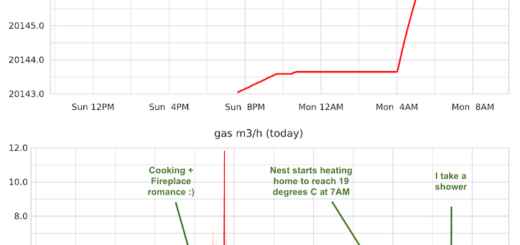Camera phones as barcode readers: increased buying power
The digital and physical world were once separate. Now, there are more and more physical products with a link to the digital world. The extreme situation is that a product ID will have a link to its source code for fabrication on a personal fabricator or a nearby fabrication service bureau. But also on shorter notice, we will see a lot more convergence.
Consider it less than 2 years from now before a major fraction of the general public has a (camera enabled) phone with internet that can scan UPC/EAN bar-codes (or any bar code for that matter). Applications like ‘CompareEverywhere’ are already made.
It is nice to see that the android equipped phones (open source OS) have the hardware to quickly scan barcodes and look them up:
It is then completely possible to bypass the shop’s AND manufacturers information push and read reviews, compare prices and find another store. This will increase the buying power (flattens the price surplus that shops can get away with charging), reduce the amount of biassed information we will use for buying. Future version of this application (on the phone) would soon know your ‘eco preferences’, whether to allow GMO food or not, constrains about diet (e.g. allergy information), etc. etc. The information that is provided will be peer-reviews that are managed similar to how Wikipedia is.
The radical change is not just ‘more’ information, but more accurate, fair information while enhancing the shopping experience (integrate with you shopping lists, integrate making the purchase (since you’ve already scanned the items)). It will be possible to apply this in the entire life cycle of a product: When you throw away a package of an item you don’t want to run out of, you can scan the barcode and confirm a repurchase (adds it to the shopping list) and where applicable, recycling information is given (how to remove the battery, what plastics were used, etc.). Non-consumables could be added to eBay almost automatically, while requiring almost no manual work to make the entry, since details regarding standard products can be found via the UPC/EAN code.
If products can carry an ID, an online record of its ‘history’ can be made (e.g. in the physical markup language).
In fact, the software already exists and is open source and installable. For a J2ME (requires MIDP2) enabled camera phone you can download zebra crossing (zxing). Find it here: Google Code: ZXing
We will have more power to make our intentions (through purchase) influence corporate decisions. When organizations have not allowed an eco-audit for their products, you have the opportunity to choose other products.
This barcode reader innovation has the ability to reach everyone with a cell phone in a very short period of time, since its mostly a software upgrade and it has viral effects (it will spread by people seeing someone else use it in a store). Of course the applications will evolve. The interface will become more seamless like this:

that really is amazing. i had the idea to write a price comparison for the iphone with barcodes when they started the app thing, but i soon found out that the cam sucks.
what would be nice to do with camera smartshones next:
have a real time combination of text recognition and translation. so when you are in a foreign country you point your cam at some sign, if recognizes the words, sends them to the google translate api (they must have one) and returns you the translated words. i think there would be a real demand for that and most signs use pretty average letters, so OCR on them should not be too hard. i know evernote does something like that already with safed images, so maybe they will be the first to come up with something like that.
LOL 🙂
You mean something like this?
http://blog.erikdebruijn.nl/archives/82-TranslateAnywhere-demo.html
Also interesting and related;
http://torrentfreak.com/bartor-enters-bittorrent-barcode-scanning-market-090325/